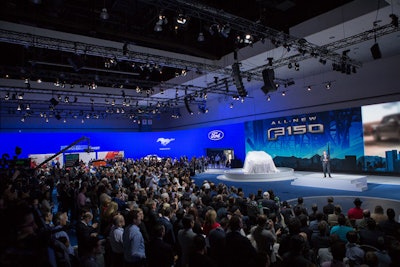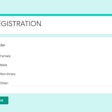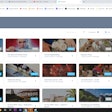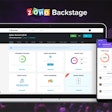
Although it’s 108 years old, the Los Angeles Auto Show—getting set for its next run at the Los Angeles Convention Center on November 20 to 29, with press days November 17 to 19—is far from stagnant. In the past several years, under a new leadership team, the show has seen tremendous growth, especially in terms of press and trade programming and attendance.
For instance, the Connected Car Expo, which launched in 2013 during press days, will move this year to the JW Marriott, having outgrown its presence within the Los Angeles Convention Center South Hall Lobby. In the new location, it will have nearly double the real estate. Overall, the show expects about 23,000 members of the press and trade this year, compared to 12,000 in 2012. Between 850,000 and one million members of the public are expected.
Terri Toennies, the executive vice president and general manager of ANSA Productions, creator and producer of the show, shares how it manages—and embraces—its growth, rather than be overwhelmed by it.
1. Know your audience.
Two years ago, 80 percent of show registrants were strictly automotive industry people. Now, nearly 80 percent are people in technology-related spaces. Instead of rejecting the inevitability of change, organizers moved toward it and got ahead of it, launching the Connected Car Expo and other programming that allowed the century-old show to adapt with the times and grow rather than fade into irrelevancy.
2. Simplify and streamline.
The organizers are also pushing online ticket sales—for instance by running some promotions that people can only get online—which reduces time spent waiting in line, one of the key hassles at a crowded event. Production team members also has cameras in their offices so they can see the lines and adapt to situations in real time.
“From a line standpoint, we struggle with that in our location, because if there is a Lakers game, a Clippers game, a concert—Staples Center is right next door to us,” Toennies says. “So sometimes those lines are [long] but that’s why we added all these box office people. When you have 20 people who can sell a ticket at any given time, you’re going to be able to keep those lines shorter. We changed the way we snake the lines, we [now] do the Disney[land style of] lines. We also have ‘line massagers’ who walk the lines and help people get to the ticket windows.”
Additionally, the show is now accepting credit cards as well as cash for convenient entry. And there is signage that alerts people to how they can pull out their smartphones and buy tickets online as an alternative.
3. Pay attention to detail.
Watching the foot traffic into the show in the past year, Auto Show organizers identified certain patterns: For example, they noticed spikes at certain entrances at certain times, and they noticed some attendees paying with the same shiny dollar coins. Using those carefully observed data points, they figured out that many attendees were arriving by train and paying with the coins they received as change in the system. From there, the team was able to pull train schedules and make sure that enough managers and ticket windows were available and ready to accommodate during the times trains arrived. The show has made small accommodations, like having coin rollers available, and larger ones like expanding ticket windows from six to 40 at a given time.
4. Consider attendee comfort.
“You have to put yourself in the shoes of the consumer,” Toennies says, referring to the importance of keeping attendees comfortable even—or especially—as the event swells over time. One way the show has done this is by adding satellite parking garages with ticket stations, which reduces the length of attendees’ walk from their cars, because it adds more entry points. (There will be six this year versus four last year and three in 2012.)
5. Invest in future growth.
The L.A. Auto Show has steps in place to ensure that its growth continues at a steady pace into the future. Toennies says one way the show does that is by creating incubation areas for smaller-time partners, investing in the companies that may come in later as higher-paying costumers. For instance, this year’s show will include zones for top start-ups and innovators, filled with companies which, according to Toennies, “next year may be at a higher level, maybe buying the big 40- by 40-foot booths," she says. "So for us, being able to develop the relationships when they are at ground level and then being there with them while they continue to grow is what’s helping us be successful. Because it’s all relationship building, right?”
6. Develop relationships.
To that end, the Auto Show is focused on building more content that attracts people overnight for longer periods of time. The approach clearly benefits the City of Los Angeles from an economic standpoint—but it benefits the show too. That’s because the show needs to work in strategic partnership with the city in order to manage its growth and succeed. “It benefits the show because the city itself, the more that they understand the economic impact of the Auto Show, the more we can get, [for instance] extra parking areas, or hotel rooms [as needed to accommodate growth].” Thus, for the organizers, relationships are a matter of leverage.
Toennies adds that the show organizers work all year long to manage and develop relationships with manufacturers and technology executives. “You don’t get anywhere if you don’t get buy in,” she says. “You need it from the community, the clients, [etc.]. Anything can be done; you just need to sit down as a team and figure it out.”



















